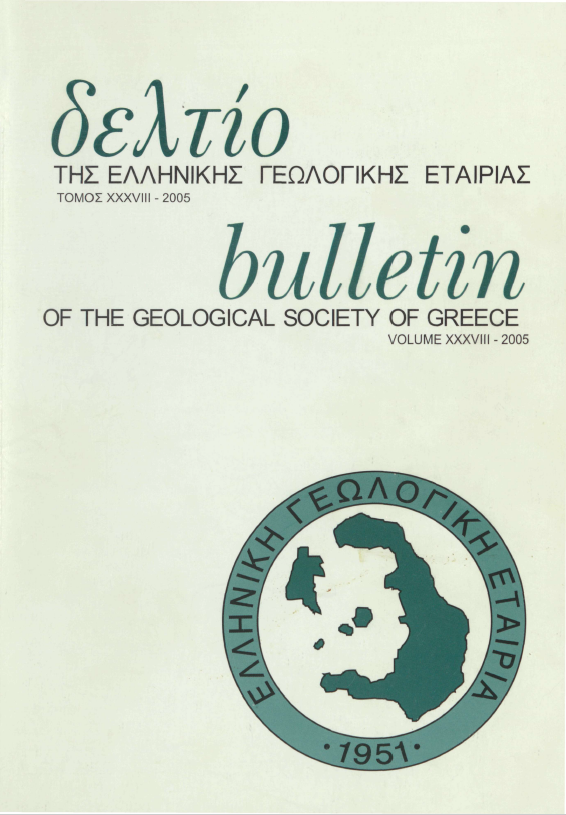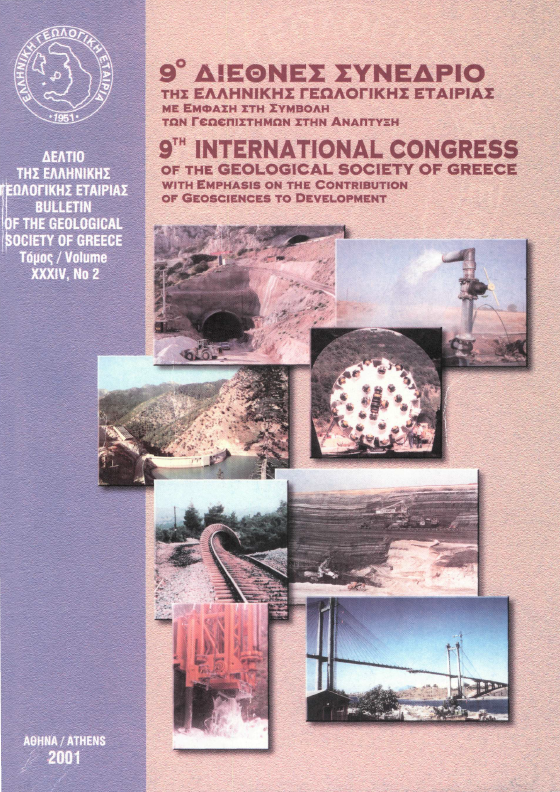Γεωχημική περιβαλλοντική μελέτη εδαφών της περιοχής Οινοφύτων, Ν. Βοιωτίας
Résumé
Στη παρούσα εργασία εξετάζονται οι περιεκτικότητες και η κατανομή των βαρέων μετάλλων Pb, Zn, Cr και Ni σε εδάφη της περιοχής Οινοφύτων, Ν. Βοιωτίας. Γίνεται επίσης προσπάθεια να εκτιμηθούν τα επίπεδα ρύπανσης των εδαφών αυτών από τα πιο πάνω βαρέα μέταλλα. Από την παρούσα έρευνα προκύπτει ότι τα εδάφη της περιοχής Οινοφύτων παρουσιάζουν περιεκτικότητες Pb, Zn, Cr και Ni, οι οποίες είναι γενικά χαμηλότερες από τα προτεινόμενα διεθνώς όρια ασφαλείας για καλλιεργήσιμα εδάφη. Η ρύπανση που παρατηρείται σε ορισμένες θέσεις, όπου οι περιεκτικότητες Pb και Zn είναι ιδιαίτερα υψηλές, οφείλεται πιθανόν σε ανθρωπογενείς δραστηριότητες καθώς η περιοχή διασχίζεται από την εθνική οδό Αθηνών-Λαμίας (κατάλοιπα της καύσης της βενζίνης των αυτοκινήτων) και φιλοξενεί ένα μεγάλο αριθμό βιομηχανιών και βιοτεχνιών, που ανήκουν στη βιομηχανική ζώνη Οινοφύτων
Article Details
- Comment citer
-
ΓΚΟΥΣΗΣ Κ., & ΚΟΝΙΣΠΟΛΙΑΤΗΣ Ν. (2005). Γεωχημική περιβαλλοντική μελέτη εδαφών της περιοχής Οινοφύτων, Ν. Βοιωτίας. Bulletin of the Geological Society of Greece, 38, 108–114. https://doi.org/10.12681/bgsg.18430
- Numéro
- Vol. 38 (2005): vol.XXXVIII
- Rubrique
- Geomorphology

Ce travail est disponible sous licence Creative Commons Attribution - Pas d’Utilisation Commerciale 4.0 International.
Authors who publish with this journal agree to the following terms:
Authors retain copyright and grant the journal right of first publication with the work simultaneously licensed under a Creative Commons Attribution Non-Commercial License that allows others to share the work with an acknowledgement of the work's authorship and initial publication in this journal.
Authors are able to enter into separate, additional contractual arrangements for the non-exclusive distribution of the journal's published version of the work (e.g. post it to an institutional repository or publish it in a book), with an acknowledgement of its initial publication in this journal. Authors are permitted and encouraged to post their work online (preferably in institutional repositories or on their website) prior to and during the submission process, as it can lead to productive exchanges, as well as earlier and greater citation of published work.




